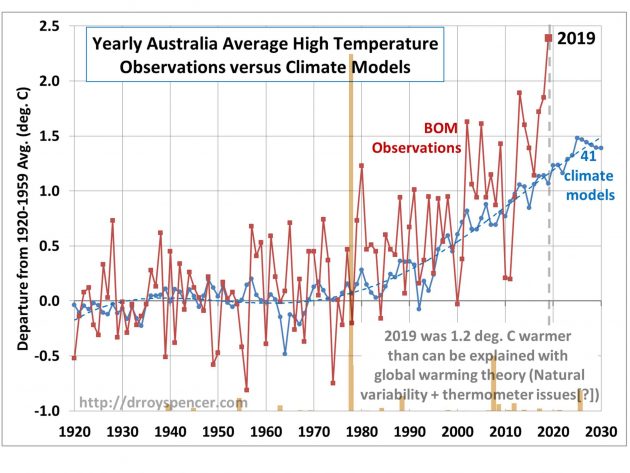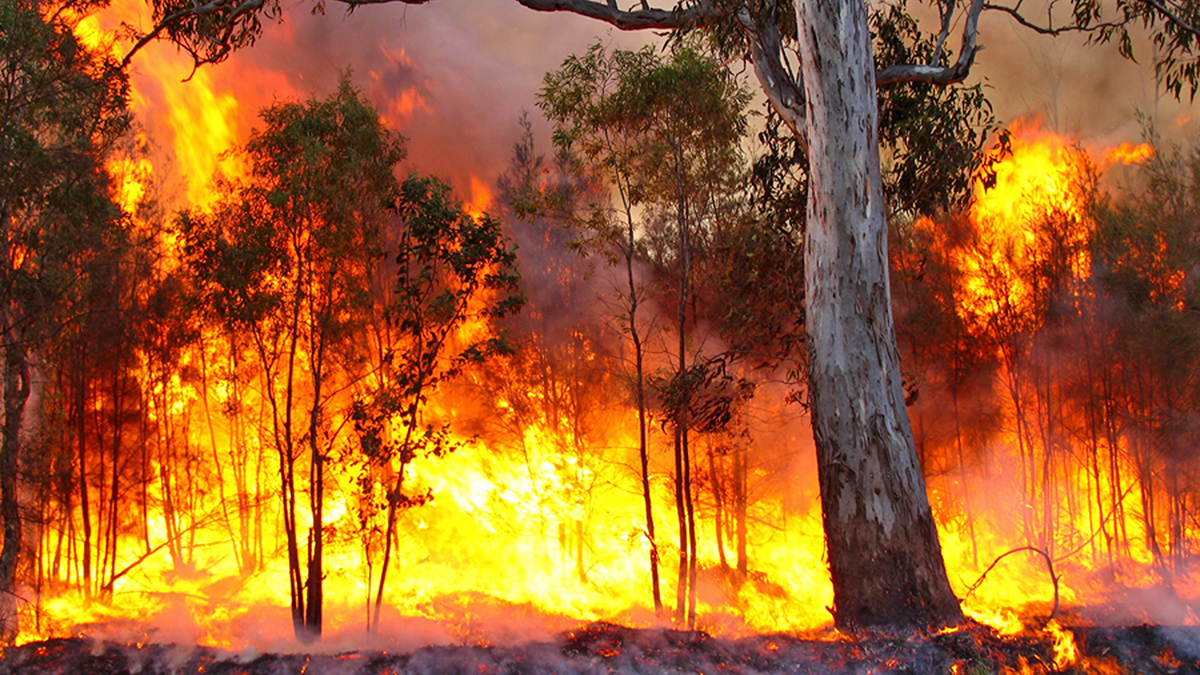As the Australian bushfire crisis rages on, the dominant narrative of the media-elite is: “it’s climate change!” From vulturine green politicians to multi-millionaire Hollywood celebrities and scowling teenage brats, the consensus of the virtue-signalling ignorant is unanimous. But, just because these empty vessels are making the most noise it doesn’t make them right.
In a sense, to be fair, it’s easy, perhaps even natural, to draw a link between the current mild warming period and unusual (though not, as the media would have it, “unprecedented”) bushfires. But, correlation is not causation. Human nature too easily tends to draw mistaken causal links in nature.
In fact, the current bushfires are not only not linked to climate change, they defy what we actually know about recent climate shifts and wild fire. Despite the recent mega-drought (which itself seems to be a rare, but periodic natural phenomenon), the long-term trend in Australia for the past century has been wetter, not drier.
The current claim by many that human-caused climate change has made Australian bushfires worse is difficult to support, for a number of reasons. Bushfires (like wildfires elsewhere in the world) are a natural occurrence wherever there is strong seasonality in precipitation, with vegetation growing during the wet season and then becoming fuel for fire during the dry season.
All other factors being equal, wildfires (once ignited) will be made worse by higher temperatures, lower humidity, and stronger winds. But with the exception of dry lightning, the natural sources of fire ignition are pretty limited. High temperature and low humidity alone do not cause dead vegetation to spontaneously ignite.
As the human population increases, the potential ignition sources have increased rapidly.
Dry lightning was certainly responsible for igniting the widespread fires in Tasmania in 2016 (I remember the spectacular storm that night well), but, as the hundreds of charges laid for arson and “carelessness” show, the current bushfires may well be largely human-ignited.
The trend in Australian bushfires does not correlate well with precipitation and temperature trends.

As can be seen, by far the largest area burned occurred during 1974-75, at over 100 million hectares (close to 15% of the total area of Australia). Curiously, though, according to Australia Bureau of Meteorology (BOM) data, the 1974-75 bushfires occurred during a year with above-average precipitation and below-average temperature. This is opposite to the narrative that major bushfires are a feature of just excessively hot and dry years.
[…] if we correlate the yearly temperatures in Fig. 2 with the bushfire land area burned in Fig. 1, there is essentially no correlation (-0.11), primarily because of the huge 1974-75 event. If that year is removed from the data, there is a weak positive correlation (+0.19, barely significant at the 2-sigma level). But having statistics depend so much on single events (in this case, their removal from the dataset) is precisely one of the reasons why we should not use the current (2019-2020) wildfire events as an indicator of long-term climate change.

Whatever is going on, climatically, in Australia, it is not following the computer model narrative.
Secondly, while it is well known that the CMIP5 models are producing too much warming in the tropics compared to observations, in Australia just the opposite is happening: the BOM temperatures are showing more rapid warming than the average of the climate models produces. This could be a spurious result of changes in Australian thermometer measurement technology and data processing as has been claimed by Jennifer Marohasy.
Or, maybe the discrepancy is from natural climate variability. Who knows?
Australia is proving to an exception to the global rule in other respects, too.
If human-caused climate change (or even natural climate change) was causing wildfire activity to increase, it should show up much better in global statistics than in any specific region, like Australia. Of course any specific region can have an upward (or downward) trend in wildfire activity, simply because of the natural, chaotic variations in weather and climate.
drroyspencer.com/2020/01/are-australia-bushfires-worsening-from-human-caused-climate-change/
The fact remains that, globally, wildfires have decreased dramatically, not the other way ‘round. If climate change is the driver of wildfire activity, then the current climate change is a downward driver. If Australia’s bushfire trend is upward, then it appears that something other than climate change is to blame.
But that doesn’t fit the narrative.
If you enjoyed this BFD article please consider sharing it with your friends.

